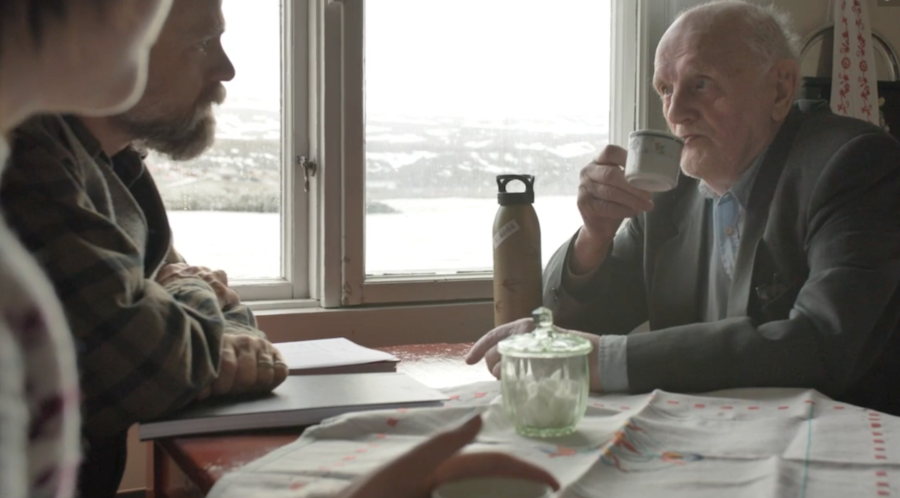Charles M Pepiton and Damon Falke’s interveiw with the National Nordic Museum before the screening of Koppmoll.
CHARLIE:
We’ve described Koppmoll as a film that negotiates the border between documenting and storytelling. Now, that was a description that occurred after the fact, in post-production. We didn’t arrive on Nordkyn with that as a plan. Stories and the manner of their telling have a way of flirting with facts. Dancing with them, you might say, supporting them at first but also letting the historic record bend and swirl as it needs to. Tore Walde says at one point near the middle of Koppmoll, “I believe this story is thought to be true. And if the facts are straight or not… It’s not that important. If it sounds believable, then it probably is true.” He trails into thought and eats a piece of dried cod before he clarifies, “Not true but…” and trails off again. It’s one of my favorite moments in the film. That’s the borderland right there, isn’t it, somewhere between documenting and storytelling. You listen to a lot of stories. What draws you to the oral record and to walking this fine line of history?
DAMON:
In a word, it would have to be intimacy, or perhaps detail, that draws me closer to an oral record. Although, I wonder now if there is something of a not knowing that I appreciate. We so often want our answers to close doors, or seemingly so. As if to find an answer ends our questions, but we rarely experience this in an oral tradition. We must, in a sense, go on, and I am in love with the idea of going on. And the details. It’s one experience to know who or how many individuals lived in a given area during a time of war, yet it is another thing to know whose father hid the radio. This is the piece of torsk you mention.
